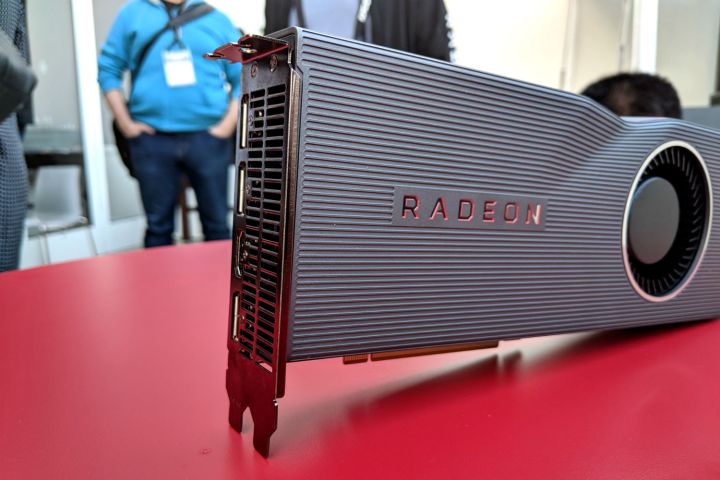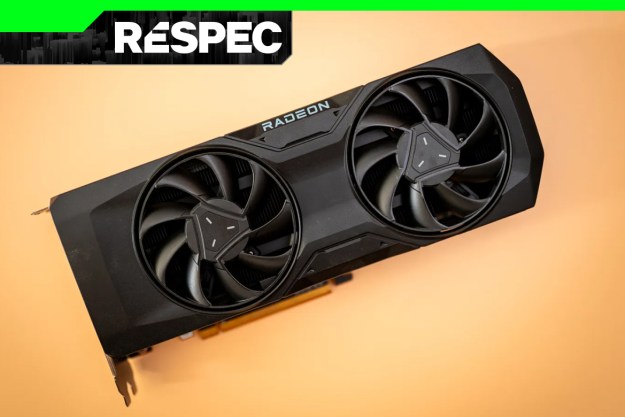
AMD’s new Navi RX 5700 graphics cards are great additions to the current GPU market, offering performance that strikes at the heart of Nvidia’s midrange. For something that competes with top-tier cards such as the RTX 2080 Super and 2080 Ti, though, we’ll have to wait until next year. But when the summer of 2020 rolls around, we could be in for something special, as AMD is working on a card that some internal staffers are calling the “Nvidia Killer.”
It’s been a long time since AMD truly had an Nvidia-killing graphics card. While the past few generations have held a few gems and remained competitive options around the entry-level and midrange of the market, AMD has failed to produce a graphics card that could compete with Nvidia’s best in multiple generations. That may change with Navi, though. Its RDNA architecture is something new and lean, with a smaller process node than Nvidia’s current crop of cards too. According to some reports, AMD’s first RDNA cards were just a taste of what’s to come. In 2020, we’re told, AMD will have some big die GPUs again, offering potentially industry-leading performance.
We always expected the first Navi graphics cards to be midrange GPUs, even if they’re edging towards the top of that price bracket. The RX 5700 and 5700 XT cards compete favorably with RTX 2060 Super and 2070 cards, and were always designed to. Regardless of whether you believe the stories of AMD deliberately overpricing Navi so it could force Nvidia’s hand on Super, the latest sources from Red Gaming Tech suggest the 5700 was designed to be a modest first attempt at an RDNA GPU. Building a big-die version of these cards with more stream processors on a brand new 7nm node was complex and costly. That’s why it’s coming later.
These will reportedly be two new AMD graphics cores released in 2020, potentially powering a whole new range of performance-focused graphics cards. Navi 21 and Navi 23 are their current code names, with Navi 23 the more powerful of the two. We’re told that AMD is so confident about the performance of this graphics chip that it’s being called the Nvidia Killer by many AMD Radeon developers. This is a confidence level that hasn’t been seen in generations.
“Nvidia Killer” could mean a more capable graphics card, or it could mean that AMD will offer more bang for the buck than Nvidia as it has often done in the past. Either way, AMD CEO Lisa Su is said to be on board with this trajectory, too. She’s shown serious leadership in the CPU space over the past few months, and is now alleged to be gunning for Nvidia with the same gusto.
All of this means that 2020 is going to be an exciting year for graphics. On top of whatever big GPU Navi launches come out of AMD — Nvidia killer or no — Nvidia itself will have its 30-series graphics cards built on its own 7nm node, and Intel is working on its Xe platform for that same year. This is great news for gamers, who should have more competitive options in 2020 than at any time this century.
Editors' Recommendations
- AMD’s graphics card sales just took a nosedive
- AMD Zen 5: Everything we know about AMD’s next-gen CPUs
- Nvidia RTX 50-series graphics cards: news, release date, price, and more
- I’ve reviewed every AMD and Nvidia GPU this generation — here’s how the two companies stack up
- AMD’s next version of FSR promises better visuals and support for Xbox




